Feasibility and acceptability of an adapted environmental enrichment intervention for endometriosis: A pilot study
- PMID: 36683601
- PMCID: PMC9846621
- DOI: 10.3389/fgwh.2022.1058559
Feasibility and acceptability of an adapted environmental enrichment intervention for endometriosis: A pilot study
Abstract
Introduction: We have previously shown that Environmental Enrichment (EE)-consisting of social support, novelty, and open spaces-decreased disease progression and anxiety in a rat model of endometriosis. We developed a novel EE intervention to be tested in a pilot randomized clinical trial (RCT) in patients with endometriosis, a painful, stressful disease.
Objective: To translate and evaluate the feasibility and acceptability of an adapted EE intervention as an adjuvant to standard-of-care for endometriosis patients.
Methods: Feasibility was assessed through recruitment, enrollment, and adherence rates. Acceptability was evaluated through a post-intervention survey and focus group discussion 3-months after the end of the intervention.
Results: Of the 103 subjects recruited, 64 were randomized to the intervention group and 39 to the control group. At the start of the intervention, the study groups consisted of 29 (intervention) and 27 (control) subjects. Enrollment rates were 45.3% and 69.2%, and adherence rates were 41.4% and 100% for the intervention and control groups, respectively. Delays resulting from natural events (earthquakes, the COVID-19 pandemic) impacted enrollment and adherence rates. The most common reasons for missing an intervention were period pain (39.1%) and work-study (34.8%). There was high acceptability (>80%) of the intervention's logistics. The majority (82.4%) of subjects would continue participating in support groups regularly, and 95.7% would recommend the intervention to other patients.
Conclusions: We showed that EE could be translated into an acceptable integrative multi-modal therapy perceived as valuable among participants who completed the intervention. High attrition/low adherence indicates that additional refinements would be needed to improve feasibility. Acceptability data indicate that EE has the potential to be integrated into the clinical management of patients with endometriosis and other inflammatory, painful disorders. Studies are ongoing to assess the efficacy of EE in improving pain symptoms, mental health, and quality of life (QoL).
Keywords: acceptability; endometriosis; environmental enrichment; feasibility; psychosocial; randomized clinical trial.
© 2023 Nieves-Vázquez, Detrés-Marquéz, Torres-Reverón, Appleyard, Llorens-De Jesús, Resto, López-Rodríguez, Ramos-Echevarría, Castro and Flores.
Conflict of interest statement
ATR, CBA, IF are co-founders of Sur180 Therapeutics, LLC. The remaining authors declare that the research was conducted in the absence of any commercial or financial relationships that could be construed as a potential conflict of interest.
Figures
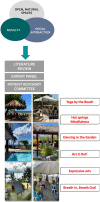
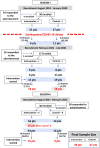
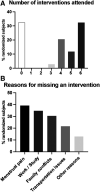
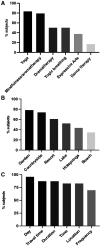
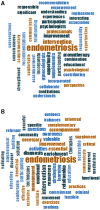
Similar articles
-
Efficacy of an environmental enrichment intervention for endometriosis: a pilot study.Front Psychol. 2023 Oct 10;14:1225790. doi: 10.3389/fpsyg.2023.1225790. eCollection 2023. Front Psychol. 2023. PMID: 37885745 Free PMC article.
-
Ohnut vs waitlist control for the self-management of endometriosis-associated deep dyspareunia: a pilot randomized controlled trial.Sex Med. 2024 Aug 31;12(4):qfae049. doi: 10.1093/sexmed/qfae049. eCollection 2024 Aug. Sex Med. 2024. PMID: 39220343 Free PMC article.
-
Feasibility randomized controlled trial of a self-guided online intervention to promote psychosocial adjustment to unmet parenthood goals.Hum Reprod. 2022 Sep 30;37(10):2412-2425. doi: 10.1093/humrep/deac168. Hum Reprod. 2022. PMID: 36001052 Free PMC article. Clinical Trial.
-
Feasibility and acceptability of an enhanced cognitive behavioural therapy programme for parent-child dyads with anxiety disorders: a mixed-methods pilot trial protocol.Pilot Feasibility Stud. 2021 May 17;7(1):109. doi: 10.1186/s40814-021-00846-8. Pilot Feasibility Stud. 2021. PMID: 34001265 Free PMC article.
-
Singing for people with aphasia (SPA): results of a pilot feasibility randomised controlled trial of a group singing intervention investigating acceptability and feasibility.BMJ Open. 2021 Jan 13;11(1):e040544. doi: 10.1136/bmjopen-2020-040544. BMJ Open. 2021. PMID: 33441355 Free PMC article. Clinical Trial.
Cited by
-
Efficacy of an environmental enrichment intervention for endometriosis: a pilot study.Front Psychol. 2023 Oct 10;14:1225790. doi: 10.3389/fpsyg.2023.1225790. eCollection 2023. Front Psychol. 2023. PMID: 37885745 Free PMC article.
-
Environmental enrichment: a systematic review on the effect of a changing spatial complexity on hippocampal neurogenesis and plasticity in rodents, with considerations for translation to urban and built environments for humans.Front Neurosci. 2024 Jun 11;18:1368411. doi: 10.3389/fnins.2024.1368411. eCollection 2024. Front Neurosci. 2024. PMID: 38919908 Free PMC article.
-
The Perception of the Quality of Professional Healthcare Assistance for the Management of Endometriosis: Findings from a National Survey in Italy.Int J Environ Res Public Health. 2023 Oct 26;20(21):6978. doi: 10.3390/ijerph20216978. Int J Environ Res Public Health. 2023. PMID: 37947536 Free PMC article.
References
-
- Young J, Pionk T, Hiatt I, Geeck K, Smith JS. Environmental enrichment aides in functional recovery following unilateral controlled cortical impact of the forelimb sensorimotor area however intranasal administration of nerve growth factor does not. Brain Res Bull. (2015) 115:17-22. 10.1016/j.brainresbull.2015.04.003 - DOI - PubMed
Grants and funding
LinkOut - more resources
Full Text Sources
Medical

